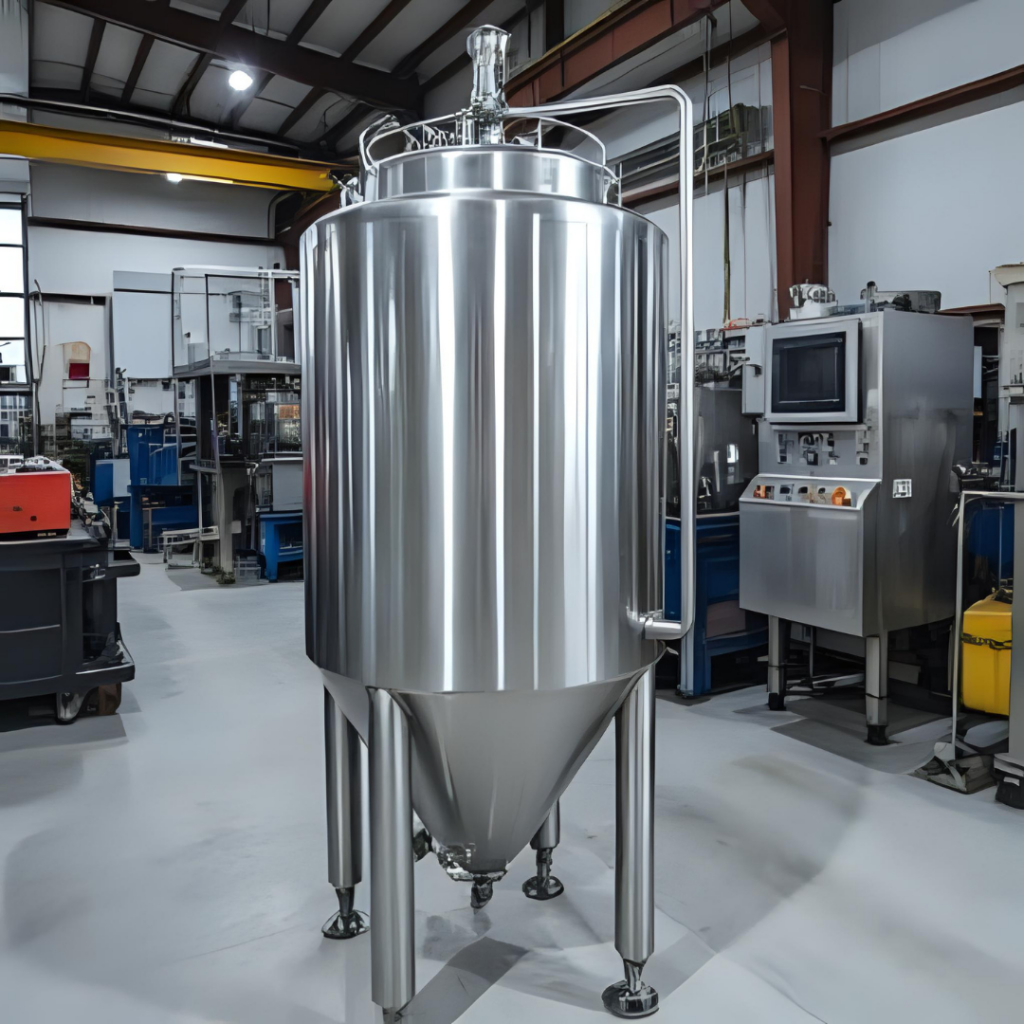What is a Stainless Steel Toothpaste Tank?
Toothpaste production is a process that requires precision and hygiene. At the heart of this process, stainless steel toothpaste tanks are one of the essential pieces of equipment that ensure efficient, hygienic, and continuous production. As Asinoks, we offer quality solutions in this field.
Equipment Used in Toothpaste Production
Toothpaste production involves many pieces of equipment. Mixers, vacuum systems, dosing pumps, and of course, most importantly, stainless steel tanks are the main components of this system.
General Description and Purpose of the Tank
Stainless steel tanks are used for mixing, homogenizing, and formulating different raw materials during toothpaste production. Additionally, vacuum systems prevent air bubbles from remaining in the product.
The Importance of Stainless Steel Tanks
Hygiene Priority
Like all equipment used in the food and cosmetic industries, hygiene is the top priority for toothpaste tanks. This is why stainless steel is preferred. Its easy-to-clean structure prevents microbiological contamination.
Durability and Long Life
Stainless steel tanks are resistant to corrosive chemicals, temperature, and vacuum. This makes them long-lasting. In particular, AISI 316 grade steel is the preferred material for toothpaste production.
Technical Specifications of the Toothpaste Tank
Stainless Steel Grades Used
- AISI 304: Suitable for general use.
- AISI 316: Ideal for production processes involving more aggressive chemicals.
Jacketed and Mixer Systems
Tanks are generally designed with a heating jacket (jacketed). This ensures the paste inside remains at the desired temperature. Additionally, the content is thoroughly mixed with homogeneous mixer systems.
Heating and Cooling Systems
Heating or cooling can be applied according to the product’s viscosity. These processes are usually carried out with water or oil circulation.
Automation and Control Panels
Automation systems are used to minimize errors in production lines. Values such as temperature, mixer speed, and vacuum level can be controlled with digital panels.
The Role of the Tank in the Toothpaste Production Process
Raw Material Mixing Stages
Liquid and powder raw materials need to be combined in the correct proportions. These processes are carried out in the tank with precise measurement and mixing.
Homogenization Process
It is essential for the paste to have a consistent texture. This is achieved with high-speed mixers and vacuum systems.
Vacuum Mixing Technology
The vacuum both prevents oxygen entry and avoids bubble formation. This improves the quality of the product.
Asinoks’s Stainless Steel Toothpaste Tanks
High-Quality Standards
As Asinoks, we conduct R&D studies specific to each sector and develop custom designs. All our tanks have ISO and CE certificates.
Custom Designs for Customers
All details you need, such as volume, mixer type, and heating-cooling systems, are custom-produced by our company.
Reference Projects
We have produced toothpaste tanks for cosmetic production facilities in many parts of Turkey.
Things to Consider When Choosing a Tank
Capacity Calculations
Choosing a tank suitable for your production volume saves energy and costs.
Mixer Type and Speeds
Not every product requires the same mixing system. Anchor mixers are preferred for dense products; propeller-type mixers are preferred for liquid products.
Ease of Cleaning (CIP/SIP)
CIP (Clean-In-Place) systems provide a great advantage for easy cleaning of the tanks. If necessary, SIP (Sterilize-In-Place) systems can also be applied.
Common Problems and Their Solutions
Insufficient Homogenization
Low-quality mixer systems reduce product quality. Asinoks eliminates this problem with its homogeneous mixer systems.
Cleaning Problems
Tanks with irregular surfaces can cause cleaning problems. This issue is resolved with Asinoks’s smooth inner surface coatings.
Corrosion Issues
Incorrect steel selection can cause corrosion. AISI 316 grade steel is very durable in this regard.
Toothpaste Tank Maintenance and Cleaning
Advantages of CIP Systems
It saves time and water. It is also safe for employee health.
The Effect of Regular Maintenance on Production
Periodic inspection of tanks reduces production errors and minimizes downtime.
Solution Partnership with Asinoks
On-Site Assessment
Our expert team analyzes your production line on-site and recommends the most suitable tank system.
After-Sales Support
We offer 100% satisfaction not only in production but also in installation and technical support.
The Technology of the Future: Smart Tanks
Automation Integration
It is now possible to monitor production data in real-time and optimize the process.
Remote Monitoring with IoT
You can track all data related to your tanks from your mobile phone or computer.
Conclusion
Stainless steel toothpaste tanks are the backbone of cosmetic production. As Asinoks, we offer you high-quality, hygienic, and long-lasting solutions. Contact us to increase production efficiency and improve product quality.
Frequently Asked Questions (FAQs)
Depending on the need, production can range from 500 liters to 50,000 liters.
It improves product quality, prevents air bubbles and oxidation.
It is determined according to the product’s density and mixing needs.
It automates the internal cleaning of the tank, providing advantages in terms of hygiene and time.
Yes, they are exported to many countries.


